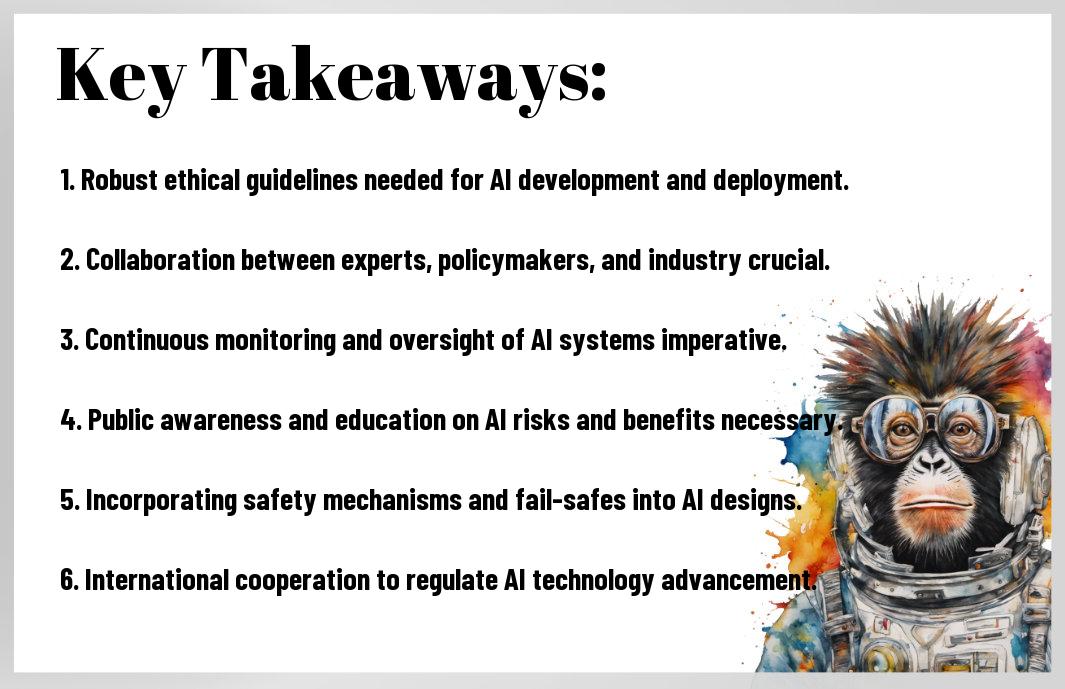There’s a pressing need to address the existential risks posed by advanced AI technologies to safeguard humanity’s future. Understanding the potential dangers and implementing strategies to prevent an AI-related catastrophe is crucial. To explore deeper into this topic, explore the resources provided by Preventing an AI-related catastrophe.
Identifying the Risks
The Reckoning with the Existential Risks of AI article sheds light on the critical risks associated with advanced AI technologies.
Job Displacement and Economic Instability
On the horizon of AI advancement lies the potential for job displacement and economic instability. As AI systems become more capable, they could replace human workers in various industries, leading to widespread unemployment and economic upheaval.
Autonomous Weapons and Military Applications
Instability in autonomous weapons and military applications poses a significant risk. The development of AI-powered weapons could lead to unforeseen consequences and escalation of conflicts, raising ethical concerns and global security threats.
Plus, the deployment of autonomous weapons may lead to a lack of human oversight in critical decision-making processes, potentially resulting in catastrophic outcomes.
Preventing the Worst-Case Scenarios
Implementing Safety Protocols and Regulations
It is crucial to implement robust safety protocols and regulations in the development and deployment of advanced AI technologies. This includes thorough testing, regular audits, and strict compliance with ethical guidelines to ensure that AI systems operate within safe parameters.
Encouraging Transparency and Accountability in AI Development
WorstCase Encouraging transparency and accountability in AI development is key to mitigating existential risks. Stakeholders must prioritize open communication, sharing of best practices, and establishing mechanisms for oversight to detect and address any potential misuse or unintended consequences of AI technologies.
Transparency: By promoting transparency in AI development, researchers and developers can build trust with the public and regulatory bodies. This can involve disclosing the data sources used, the algorithms deployed, and the decision-making processes of AI systems to ensure they align with ethical standards and best practices.
Developing AI That Benefits Humanity
Keep An AI Pause Is Humanity’s Best Bet For Preventing Extinction is crucial in mitigating the existential risks posed by advanced AI technologies. By focusing on developing AI systems that prioritize the betterment of humanity, we can ensure a future where AI serves as a tool for progress rather than a threat.
Focusing on AI Applications for Social Good
Good AI applications for social good can help address pressing societal challenges such as healthcare disparities, climate change, and poverty. By directing AI research and development towards these causes, we can harness the technology’s potential to create positive impact and improve the quality of life for people around the world.
Incentivizing Research in AI Ethics and Governance
To incentivize research in AI ethics and governance, we must establish frameworks that promote responsible AI development and usage. This includes funding initiatives that prioritize the exploration of ethical considerations, transparency, and accountability in AI systems to ensure they align with human values and societal well-being.
The exploration of ethical considerations and governance practices in AI is necessary to safeguard against potential risks and ensure that AI technologies are developed and deployed in a manner that aligns with our values and principles. By incentivizing research in these areas, we can proactively address potential pitfalls and build a future where advanced AI technologies benefit humanity as a whole.
Final Words
Conclusively, the existential risks posed by advanced AI technologies are real and should not be underestimated. To mitigate these risks, it is crucial for governments, tech companies, and researchers to prioritize safety measures, establish regulations, and promote transparency in the development of AI systems. By working together and taking proactive steps, we can harness the potential benefits of AI while minimizing the potential dangers it may bring.





